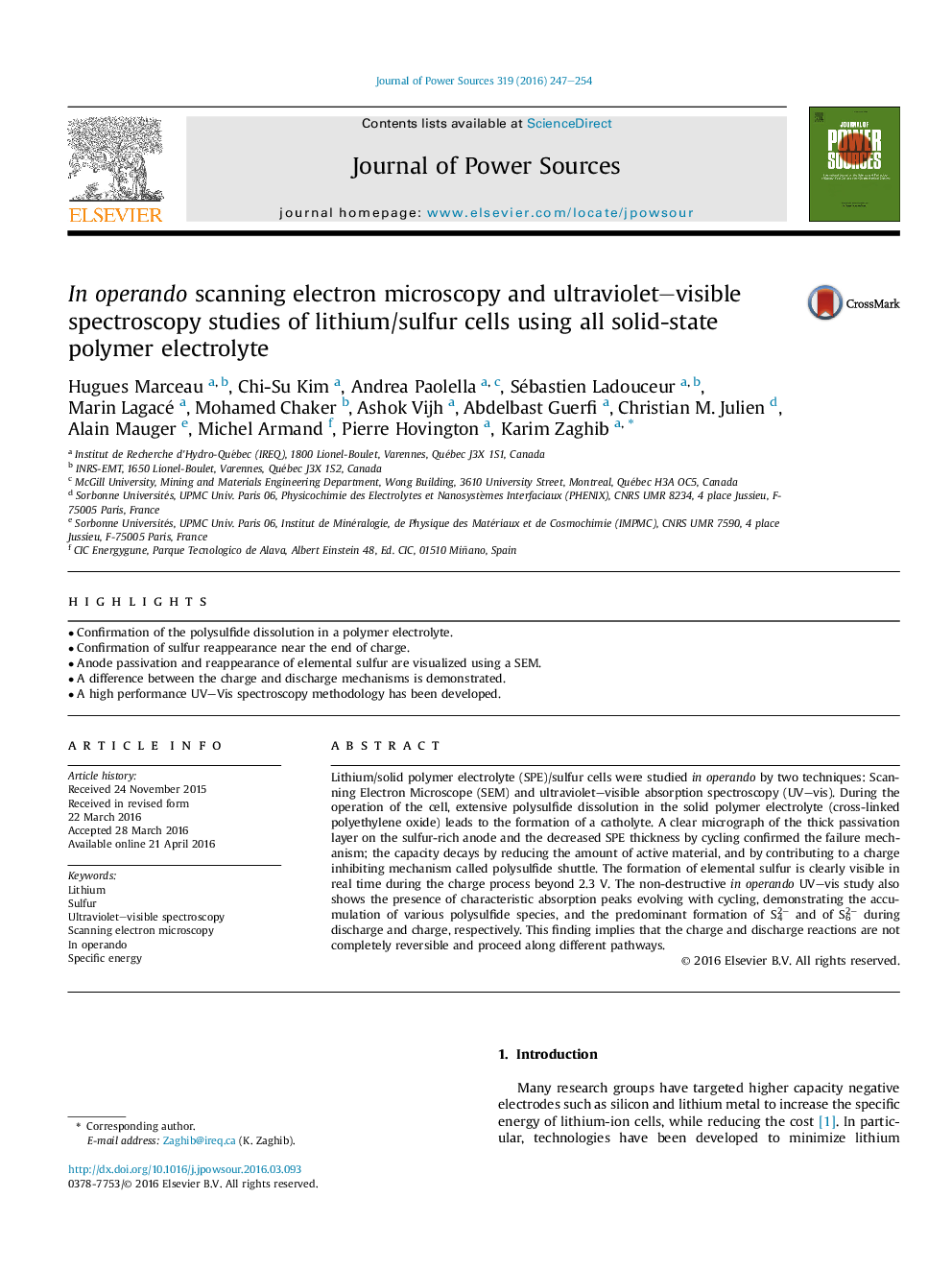| Article ID | Journal | Published Year | Pages | File Type |
|---|---|---|---|---|
| 1292005 | Journal of Power Sources | 2016 | 8 Pages |
•Confirmation of the polysulfide dissolution in a polymer electrolyte.•Confirmation of sulfur reappearance near the end of charge.•Anode passivation and reappearance of elemental sulfur are visualized using a SEM.•A difference between the charge and discharge mechanisms is demonstrated.•A high performance UV–Vis spectroscopy methodology has been developed.
Lithium/solid polymer electrolyte (SPE)/sulfur cells were studied in operando by two techniques: Scanning Electron Microscope (SEM) and ultraviolet–visible absorption spectroscopy (UV–vis). During the operation of the cell, extensive polysulfide dissolution in the solid polymer electrolyte (cross-linked polyethylene oxide) leads to the formation of a catholyte. A clear micrograph of the thick passivation layer on the sulfur-rich anode and the decreased SPE thickness by cycling confirmed the failure mechanism; the capacity decays by reducing the amount of active material, and by contributing to a charge inhibiting mechanism called polysulfide shuttle. The formation of elemental sulfur is clearly visible in real time during the charge process beyond 2.3 V. The non-destructive in operando UV–vis study also shows the presence of characteristic absorption peaks evolving with cycling, demonstrating the accumulation of various polysulfide species, and the predominant formation of S42− and of S62− during discharge and charge, respectively. This finding implies that the charge and discharge reactions are not completely reversible and proceed along different pathways.
